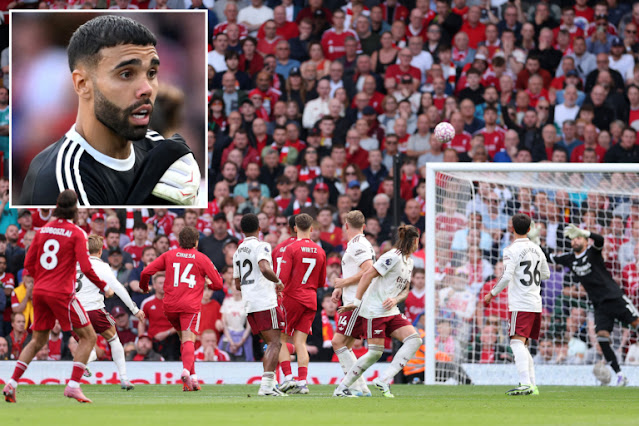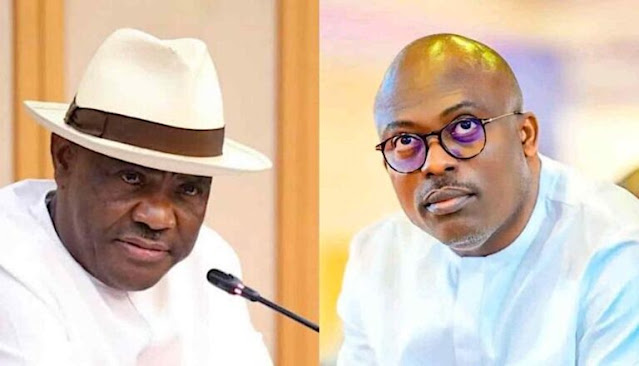In a tightly contested Premier League clash at Anfield on Sunday, September 1, 2025, Liverpool emerged victorious with a 1-0 win over Arsenal, thanks to a breathtaking free-kick from Dominik Szoboszlai. The Hungarian midfielder’s moment of brilliance left Arsenal goalkeeper David Raya with little chance, and in the aftermath, Raya candidly admitted that he is still grappling with the nuances of the new Puma ball introduced for the 2025-26 Premier League season. Speaking to Sky Sports after the match, Raya acknowledged the challenges posed by the new equipment while praising the quality of Szoboszlai’s strike, which ultimately decided the outcome of the high-stakes encounter.
The match itself was a showcase of tactical discipline, defensive resilience, and fine margins, with both teams demonstrating why they are considered among the Premier League’s elite. Arsenal, under the stewardship of Mikel Arteta, have established themselves as perennial contenders in recent years, while Liverpool, revitalized under their current management, continue to pose a formidable threat at home. The solitary goal, however, highlighted not only Szoboszlai’s technical prowess but also the subtle differences in equipment that can influence the outcome of a game at the highest level. Raya’s comments shed light on the broader implications of the Premier League’s switch from Nike to Puma as the official ball supplier, a change that has sparked discussions among players, coaches, and analysts alike.
The Match: A Game of Fine Margins
The atmosphere at Anfield was electric as two of the Premier League’s heavyweights clashed in what was billed as an early-season litmus test for both sides. Arsenal entered the game with confidence, having maintained an impressive record against top-six teams in recent seasons. Liverpool, meanwhile, were buoyed by their passionate home support and a squad brimming with attacking talent. The game was expected to be a chess match, with both managers deploying strategies to neutralize the opposition’s strengths.
For much of the first half, Arsenal succeeded in keeping Liverpool’s attacking threats at bay. Raya, who has solidified his position as Arsenal’s first-choice goalkeeper since joining from Brentford, was instrumental in maintaining a clean sheet for the opening 45 minutes. His distribution from the back, a hallmark of Arteta’s possession-based system, allowed Arsenal to build play patiently and frustrate Liverpool’s high press. However, despite Arsenal’s control, they struggled to create clear-cut chances, with Liverpool’s defense, marshaled by the ever-reliable Virgil van Dijk, standing firm.
The turning point came in the second half when Liverpool were awarded a free-kick in a dangerous position just outside Arsenal’s penalty area. Szoboszlai, known for his technical ability and set-piece expertise, stepped up to take the kick. With a whip-like motion, he sent the ball curling over Arsenal’s defensive wall and into the top corner, leaving Raya rooted to the spot. The strike was a moment of individual brilliance, but Raya’s post-match comments suggested that the new Puma ball may have played a role in his inability to make the save.
Raya’s Assessment: The Challenge of the Puma Ball
In his interview with Sky Sports, Raya was quick to give credit to Szoboszlai for the quality of the free-kick. “It was a magical moment from them,” he said, acknowledging the precision and power behind the Hungarian’s strike. However, he also pointed to the new Puma ball as a factor that may have influenced his reaction. “It’s different to the Nike ball, so we have to adapt to it. The grip is different, the kick is different,” Raya explained. “We just have to adapt after playing with the Nike ball for many years. It’s the same for everybody.”
The transition to a new ball is a subtle but significant change in professional football, where players rely on muscle memory and familiarity to perform at their peak. For goalkeepers, in particular, the characteristics of the ball—its weight, texture, and flight—can make a substantial difference in how they anticipate and react to shots. The Premier League’s decision to switch to Puma as its official ball supplier for the 2025-26 season marked the end of a long-standing partnership with Nike, which had provided the league’s match balls for over two decades. The new Puma Orbita ball, designed with advanced aerodynamics and a unique surface texture, has been praised for its consistency but has also drawn scrutiny from players still adjusting to its properties.
Raya’s comments highlight the challenges faced by goalkeepers in adapting to these changes mid-season. Unlike outfield players, who primarily focus on passing and shooting, goalkeepers must contend with the ball’s behavior in high-pressure situations, such as set-pieces or long-range shots. The grip, as Raya noted, affects how the ball feels when caught or punched, while the “kick” refers to the ball’s trajectory and spin, which can alter its flight path unpredictably. Szoboszlai’s free-kick, with its combination of swerve and pace, may have exploited these differences, catching Raya off guard despite his best efforts.
The Broader Context: Equipment Changes in Football
The introduction of a new ball is not a novel phenomenon in football, but it often sparks debate about its impact on the game. Historically, changes in ball design have led to complaints from players and managers, particularly when the new equipment alters the dynamics of play. For example, the Adidas Jabulani ball used during the 2010 FIFA World Cup was heavily criticized for its unpredictable flight, with goalkeepers and strikers alike struggling to adapt. Similarly, the Puma Orbita’s debut in the Premier League has prompted discussions about whether it favors certain types of players—such as technically gifted set-piece specialists like Szoboszlai—or disadvantages others, like goalkeepers.
The Puma Orbita is designed to offer improved aerodynamics, with a 12-panel construction that reduces drag and enhances stability in flight. According to Puma, the ball’s surface texture provides better grip for outfield players, particularly in wet conditions, while its internal structure ensures consistent performance across different playing environments. However, these advancements come with a learning curve, as players must recalibrate their instincts to account for the ball’s unique characteristics. For goalkeepers, this adjustment can be particularly challenging, as they have less time to react to shots and must rely on split-second decisions.
Raya’s remarks underscore the universal nature of this challenge. “It’s the same for everybody,” he noted, suggesting that all Premier League teams are navigating the same transition. Indeed, other goalkeepers and players have echoed similar sentiments in recent weeks, with some praising the ball’s consistency and others expressing frustration at its unpredictability. For Arsenal, a team that prides itself on precision and control, adapting to the new ball is a necessary step to maintain their competitive edge.
Arsenal’s Performance: A Display of Character
Despite the defeat, Raya was keen to highlight the positives from Arsenal’s performance at Anfield. “We showed a lot of character to keep Liverpool quiet,” he said. “You have to take the positives from it. It’s fine margins.” His comments reflect the resilience that has become a hallmark of Arteta’s Arsenal, a team that has grown accustomed to competing in hostile environments against top-tier opposition. While the loss was a setback, Raya’s focus on the team’s ability to neutralize Liverpool for large periods of the game speaks to their tactical discipline and defensive organization.
Arsenal’s record against top-six teams has been a point of pride in recent seasons, and Raya was quick to emphasize this. “We haven’t been beaten from the top six clubs in many games,” he said, underscoring the team’s competitiveness in high-stakes matches. The defeat to Liverpool, while disappointing, was decided by a moment of individual brilliance rather than a systemic failure on Arsenal’s part. For Raya, the loss serves as a learning opportunity, with “a lot of steps forward to take and learn in every single aspect.”
The goalkeeper’s optimism is reflective of Arsenal’s broader trajectory under Arteta. Since taking over in 2019, the Spanish manager has transformed the Gunners into a cohesive unit capable of challenging for major honors. Their performances against top teams, including Manchester City, Chelsea, and Manchester United, have demonstrated their ability to compete at the highest level. However, as Raya noted, fine margins often determine the outcome of these matches, and Szoboszlai’s free-kick was a stark reminder of the quality required to secure victory in the Premier League.
The Role of Set-Pieces in Modern Football
Szoboszlai’s goal also highlighted the growing importance of set-pieces in modern football. With teams increasingly reliant on data-driven strategies, set-pieces have become a critical battleground, where preparation and execution can make the difference between victory and defeat. Liverpool, known for their meticulous approach to dead-ball situations, capitalized on their opportunity, with Szoboszlai’s strike showcasing the rewards of hours spent on the training ground.
For Arsenal, the goal exposed a rare vulnerability in an otherwise disciplined defensive setup. Arteta’s teams are typically well-drilled in defending set-pieces, but Szoboszlai’s precision and the unique properties of the Puma ball combined to create an unstoppable moment. Raya’s acknowledgment of the goal as a “magical moment” suggests that even the best-prepared teams can be undone by individual brilliance.
The incident also raises questions about how teams adapt to equipment changes in the context of set-pieces. Free-kicks, in particular, are heavily influenced by the ball’s design, as players like Szoboszlai can exploit its aerodynamics to generate unpredictable movement. Goalkeepers, tasked with anticipating these variations, face an uphill battle when the ball behaves differently from what they’ve trained with. As the Premier League season progresses, it will be interesting to see how teams adjust their set-piece strategies to account for the Puma ball’s characteristics.
Raya’s Evolution as Arsenal’s No. 1
David Raya’s comments also offer insight into his development as Arsenal’s first-choice goalkeeper. Since joining the club on loan from Brentford in 2023 before making the move permanent, Raya has established himself as one of the Premier League’s top goalkeepers. His ability to play out from the back, combined with his shot-stopping prowess, has made him an ideal fit for Arteta’s system. However, the transition to Arsenal has not been without challenges, as Raya faced scrutiny early in his tenure while competing with Aaron Ramsdale for the starting spot.
Now firmly entrenched as Arsenal’s No. 1, Raya has shown resilience and adaptability, qualities that were evident in his post-match reflections at Anfield. His willingness to acknowledge the difficulties posed by the new ball while maintaining a positive outlook demonstrates his maturity and professionalism. For a goalkeeper in his prime, these experiences are part of the learning curve that will shape his career at the elite level.
Raya’s performance against Liverpool, despite the defeat, was a testament to his growth. His ability to keep Liverpool’s potent attack at bay for much of the game showcased his composure under pressure, while his distribution helped Arsenal maintain control in possession. The free-kick conceded was a rare blemish, but Raya’s ability to analyze the moment objectively bodes well for his future development.
Looking Ahead: Arsenal’s Path Forward
As Arsenal reflect on their defeat at Anfield, the focus will shift to how they respond in the coming weeks. The Premier League is a marathon, not a sprint, and Arteta’s side has shown an ability to bounce back from setbacks in the past. With a favorable run of fixtures on the horizon, Arsenal have an opportunity to regain momentum and solidify their position in the title race.
For Raya and his teammates, adapting to the new Puma ball will be an ongoing process. Training sessions will likely focus on familiarizing players with the ball’s characteristics, particularly in set-piece scenarios. Goalkeepers, in particular, may spend extra time working on their positioning and reactions to account for the ball’s unique flight path.
The broader implications of the ball change extend beyond Arsenal. As Raya noted, “It’s the same for everybody,” meaning that all Premier League teams are navigating the same challenges. Teams with strong set-piece specialists, like Liverpool, may have an advantage in the short term, but the league’s top sides are likely to adapt quickly. For fans, the introduction of the Puma ball adds an intriguing subplot to the season, as players and coaches adjust to a new variable in an already unpredictable competition.
Conclusion
Dominik Szoboszlai’s stunning free-kick may have been the decisive moment in Liverpool’s 1-0 victory over Arsenal, but David Raya’s post-match comments provided a deeper perspective on the challenges facing players in the modern game. His acknowledgment of the difficulties posed by the new Puma ball highlights the subtle but significant impact of equipment changes in football. While Szoboszlai’s brilliance deservedly stole the headlines, Raya’s reflections serve as a reminder of the fine margins that define elite-level competition.
For Arsenal, the defeat at Anfield is a setback but not a crisis. Raya’s emphasis on the team’s character and their strong record against top-six sides suggests that the Gunners remain a force to reckon with. As they continue to adapt to the new ball and refine their approach, Arsenal will look to build on the positives from their performance and turn fine margins in their favor in future matches.
The Premier League’s switch to the Puma Orbita ball has added a new layer of complexity to an already competitive season. For goalkeepers like Raya, the challenge is to master the nuances of the new equipment while maintaining the high standards expected at the top level. As the season unfolds, the interplay between player adaptation and tactical innovation will continue to shape the narrative of the 2025-26 campaign.






